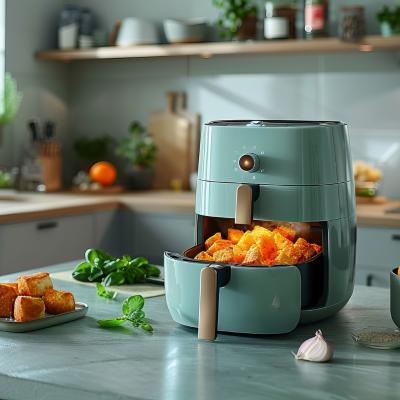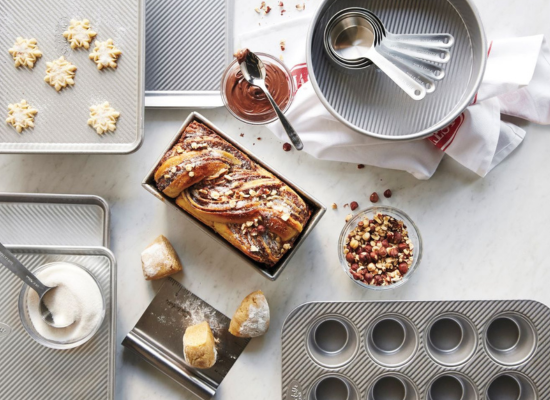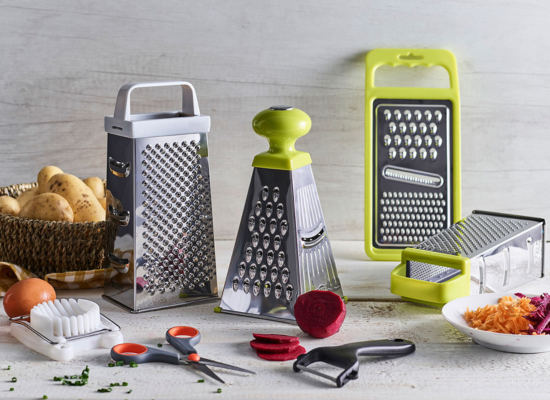
With so many pans on the market, how can you determine which one is best? There are many different sizes, shapes, coatings, and names to choose from! But don’t worry; we’re here to help you decide.
Like many of us, you may have never heard of French skillets, which have recently become famous in kitchens throughout the United States.
But aren’t all pans the same? What is the difference between a French skillet and a frying pan?
There is a lot of overlap between French skillets and frying pans in terms of size, material, and use. But their sides are the most significant distinction.
Frying pans have sloping, low edges, but French skillets have straighter, considerably higher sides.
So, we’ll compare frying pans and French skillets in detail in this article. This will give you a better understanding of the design and use differences between French Skillet and Fry Pan.
|
Feature |
Frypan |
French skillet |
|
Materials |
Made from stainless steel material |
Made from stainless steel material |
|
Bottom |
Flat bottom |
Flat bottom |
|
Size |
6-16 inches |
9-11 inches |
|
Handles |
Has a handle (one long handle and a grab handle) |
Has a handle (one long handle and a grab handle) |
|
Sides |
Low sloping |
High straight sides |
|
Uses |
Fry foods in small quantities Flipping and tossing |
Frying food in large quantities |
|
Diameter |
Holds small liquid amounts |
Holds large liquid amounts |
|
Lid cover |
Lack lids |
Lack lids |
French Skillet
A French skillet is nearly identical to a frying pan in almost every way, with only minor differences. Long handles and a flat and wide bottom are common features. Due to a few subtle differences, the frying pan and French skillet work differently.
The French skillet comes in a variety of sizes. It comes in sizes from 9 to 11 inches. Rarely you might find sizes ranging from 8 to 12 inches for sale.
The French skillet is generally considered a combo of a fry pan and a sauté pan. The pan has flared edges like a frying pan, and its depth is like a sauté pan.

If you want to cook more food at once without getting hurt or getting food burned, this pan is right. As the pan gets bigger, the sides are sometimes 2-3 inches steep.
The pan has curved edges. It lets you flip, toss, and stir different types of food in the air without spilling.
The lids on French skillets are very rare, like saute pans. So, you can buy a lid of your choice for your French skillet.
French skillets are made of stainless steel, aluminum, and a copper core, reducing corrosion and increasing durability.
The French skillets come with ergonomic handles. Those handles make them comfortable and safe to use.
Moreover, you can find french skillets with single or double handles. Double handles give better grip and safety.
Since French skillets have straight sides and are designed for sautéing and browning, most don’t have a non-stick coating. Still, you can find some with a non-stick coating if you prefer.
These cooking pans are much more affordable and easier to find than regular frying pans depending on the brand and materials.
Overall, French skillets are quite similar to frying pans. The things that make them different are the capacity and non-stick surface. The large capacity of French skillets makes them suitable for cooking food in large quantities.
Fry Pan
A fry pan is one of the most common cooking utensils. They are so versatile and can handle a lot of cooking tasks. For everyday cooking, there is no alternative to frying pans.
These pans were designed to fry different foods at a high heat level. In addition, their flat and non-sticky surfaces cook the food well with less oil, maintaining a good texture and perfect taste.
Besides, tasks like browning, searing, and sauteing are easier in the fry pan.
Frying pans are available in sizes ranging from 6 to 16 inches, but the most common is 12 inches.

The best size depends on the use. Smaller pans are fine for small tasks like frying eggs. Larger pans are needed for shallow and stir-frying.
One of the essential features of a frying pan is its thick flat surface. The surfaces in good quality frying pans are made with aluminum and copper, finally finished with a non-stick coating.
The thick surface maintains an even distribution of heat and ensures the food is cooked properly.
The frying pan diameter ranges from 200 to 300 mm, and the edges are low at 1–2 inches. So, these pans cannot hold a load of food like French skillets.
You can easily slide pancakes, eggs, and omelets due to their flaring sides. Also, it prevents steam retention, which might speed up the cooking process and prevent food from getting squelchy.
Frypans don’t come with lids, as frying and sauteing tasks don’t require lids. If you find a fry pan with a lid, it is not a fry pan but a saute pan.
Fry pans are made of stainless steel. It helps reduce corrosion and allows for even heat distribution.
Moreover, these aspects make them durable and long-lasting.
NB: Both fry pans and French skillets are interchangeable, depending on the food you are cooking.
It is easier to substitute the frying pan and French skillet for each other to do tasks like searing meat, sautéing vegetables, frying eggs, thickening sauces, etc.
Conclusion
People frequently mix up frying pans, sauté pans, and French skillets.
In most cases, a French skillet is a cross between a frying pan and a sauté pan. The differences between the two pans are pretty minimal. And People’s opinions vary widely.
You might find it comfortable to use frying pans for browning and sautéing, but French skillets are the best fit to do the job.
However, it is the user’s personal preference whether he will use a fry pan or a French skillet. The design, availability of funds, size, and weight all play a role in the decision.



